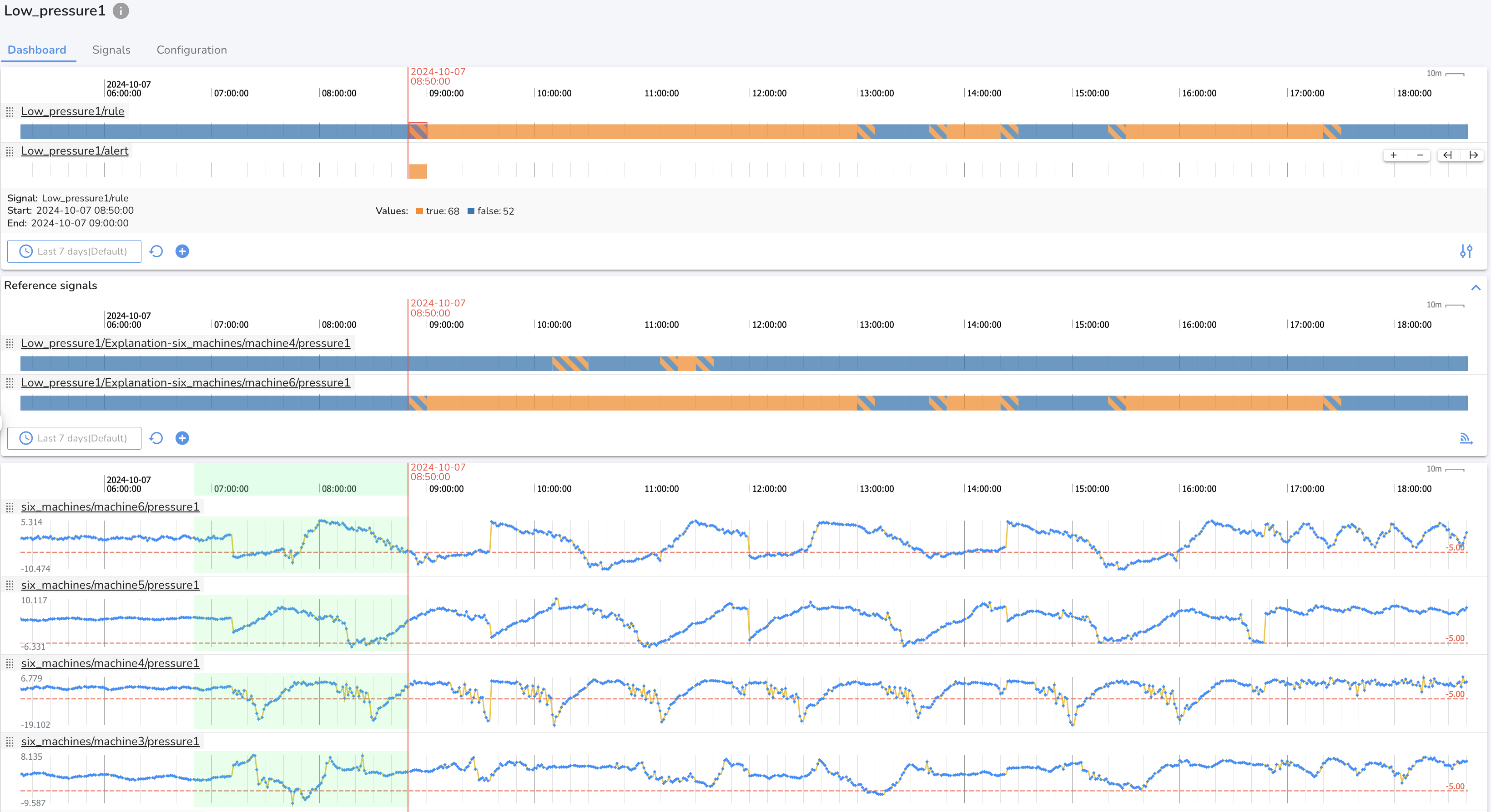Rules & Alerts¶
What are Rules in Falkonry TSI?¶
In Falkonry TSI, a Rule is a set of criteria applied to one or more signals to produce a True or False assessment. Falkonry evaluates these rules automatically and periodically. Rules can optionally generate Alerts to enable tracking and notification of important events. Essentially, Rules serve to convert raw quantities, anomaly scores, and condition labels into discrete events based on thresholds. They are a primary tool for automation within Falkonry TSI.

What are Alerts in Falkonry TSI?¶
Alerts in Falkonry TSI are real-time notifications generated when user-defined rules detect abnormal or noteworthy behavior in signal data. These alerts can be based on:
- Raw thresholds (e.g., signal exceeds a value)
- AI-driven anomaly scores (via Insights)
- Recognized patterns (via Patterns models)
- Compound logic across multiple signals
Alerts are configurable with persistence (how long a condition must hold) with alert frequency to avoid repetitive notifications, making them relevant, actionable, and reliable for industrial operations.
Purpose and Benefits¶
Falkonry Rules are designed to drive condition-based actions and support operational excellence by providing smart alerts. Here are some key purposes and benefits:
Trigger condition-based actions¶
Rules can be configured to trigger actions based on specific behaviors derived from any combination of signals in a no-code interface. This includes driving actions related to maintenance, reliability, quality, compliance, calibration, emissions, and energy.
Flexible alerting¶
Rules allow for smart alerts based on threshold levels, anomaly detection scores, or by filtering alerts based on operational context. This helps avoid a "tsunami" of alerts often seen in SCADA systems.
No-Code administration¶
You can build and manage rules without needing any programming capabilities or IT complexity. This democratizes analytics for all engineers.
Compound and Nested Logic¶
Rules support complex conditional logic by allowing the output of one or more rules to be fed as input into another rule.
Noise Reduction¶
Capabilities like auto-snooze help reduce the number of alerts when a condition persists, preventing users from being inundated with redundant notifications.
Data quality monitoring¶
Rules can be built to monitor data degradation or data quality degradation, alerting you to inconsistencies like frequency changes or faulty signals.
Real-time and low-Latency¶
Rules can be applied to data as soon as it arrives in Falkonry TSI, enabling low-latency, condition-based alerts.
Scalability¶
You can define one rule for multiple similar signals (e.g., 50 motors drawing current within the same bounds), keeping the number of rules manageable. Rules can be designed once and applied many times.
Integration¶
Rules integrate with external systems via REST APIs, MQTT, Webhooks, or iPaaS solutions to trigger workflows, create work orders in CMMS/EAM systems, or generate reports.
Note
Refer here for API documentation on rules and alerts.